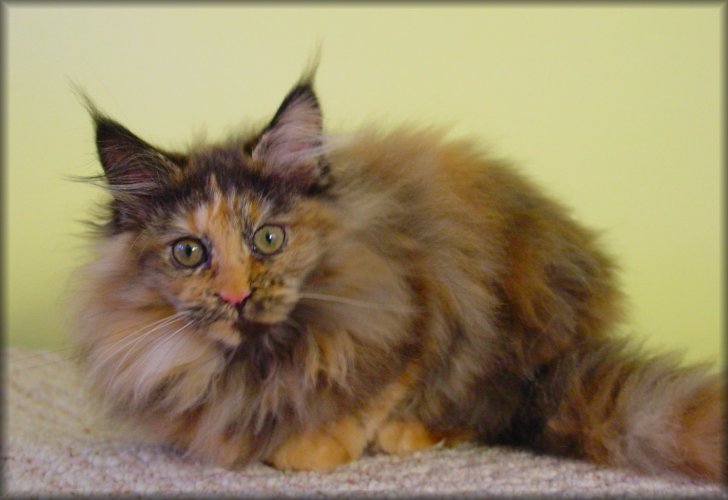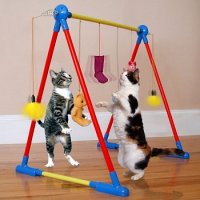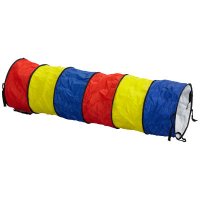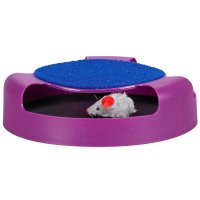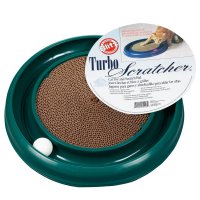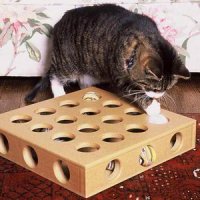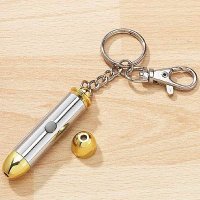|
|
||
|
|
The Maine Coon
|
Cat &
Kitten Care
|
About
Us
|
Our
Cats
| |
||
|
GROOMING There are some differing views on this issue but in general there is usually no reason to bathe your cat especially an indoor cat. However, you should brush or comb your cat regularly. Frequent brushing helps keep your cat's coat clean, reduces the amount of shedding and cuts down on the incidence of hairballs. As long as their skin is healthy and parasite-free they should not be scratching or constantly shedding. Cats spend a large percentage of their days grooming themselves and they are experts at it. Using their barbed tongues they lick dirt and debris off their fur in order to keep it clean and odor free. Cats with long hair may require the occasional bath if their fur gets too oily. Their fur can get too oily based on climate conditions and the individual skin of the cat. There are also occasional times when your cat's fur may get excessively dirty due to some mishap that the cat has gotten itself into. In some of these cases it may be necessary to give your cat a bath. If your cat is a show cat and is about to be shown then it will need to be bathed as well. You should know right off the bat that almost all cats hate baths, so be prepared. Here are some tips to make the experience easier:
Note: It is 100% normal for the cat to start licking its fur immediately after you've finished all your hard work. We recommend the use of Miracle Coat Foaming Waterless Shampoo For Cats as an alternative for those that prefer a less invasive method of bathing their cat. INDICATORS OF GOOD HEALTH IN KITTENS AND CATS ** Energetic, playful and interactive. ** Ears should be clean and free of discharge, excessive wax, or parasites. ** Eyes should be clear and the membranes pink. Any discharge or redness may indicate an allergic reaction or infection. ** Eating and drinking regularly. ** Normal, relatively firm stools and regular, pain free urination. ** Skin should be free of excessive dryness and flaking. Coat should be clean, shiny and parasite free. ** The Abdomen nor any other part of the body (limbs, muscles) should not appear swollen or painful to touch. ** Movement should be effortless and pain free.
SCRATCHING Provide your cat with a sturdy scratching post, at least three feet high, which will allow her to stretch completely when scratching. The post should also be stable enough that it won't wobble during use, and should be covered with rough material such as sisal, burlap or tree bark. Many cats also like scratching pads. A sprinkle of catnip once or twice a month will keep your cat interested in her post or pad. You may want to place several scratching posts or pads in different areas of your home as well. A cat tree is an essential piece of furniture as it helps to keep cats off of your own furniture. In addition, they will provide your cats with a source of entertainment and energy release. Cutting your cat’s nails every two to three weeks will keep them relatively blunt and less likely to harm the arms of both humans and furniture however, this is not really in the best interests of the cat. See the article below on "Claws". Claws
The cat's claws are unique in the animal kingdom in design and function. Many
mammals have claws, with the primary function as an aid in digging and
climbing, and for added traction. The claws of these animals are continuously
growing, like our own finger nails, and are kept from growing too long through
their use.
Cats, however, have evolved a very specific use for their claws, comparable to birds of prey. Although their agile climbing abilities are greatly supported by them, and the claws are also frequently used to maintain good traction, the main purpose, especially for the claws of the front paws, is to get a good grip onto their prey, and ability to hold on to it. The design of the cat's claws demonstrates this very nicely. The shape of the claws is sickle-like with a needle sharp-tip. To maintain the sharp tip, cats are able to retract their claws into a skin pouch while walking to avoid wear and tear. Of course the cat's claws grow and renew themselves continuously, but not like a human's fingernails or the claws of dogs. For a better understanding, envision the cat's claws to be built very much like an onion. The claw grows within, whilst the outer, worn layers are shed. The outer layer will loosen from the cuticle and fall off, a process which is supported by the cat's scratching behaviour, leaving behind paper-thin claw contours (husks) at her favourite scratching post. Claw "Husks" 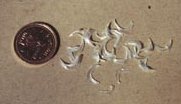 Because the cat's claws are such "weapons" many care givers like to clip their companion cats' claws to avoid injury to themselves, or destruction of furniture. This process, however, severely interrupts the claws’ natural renewal cycle. By clipping the tip of the claws the outer layers to be shed often accumulate alongside the claws and under the cuticle, frequently resulting in an infection of the nail bed. An accumulation of old layers on clipped claws often gives the appearance of brittle claws, which care givers often remedy by lubricating the claws with oil. The oil will soak through the entire horny tissue of the claw, gluing the layers together. Subsequently, the claws will grow into large, dull stumps, often causing discomfort to the cat. Avoid clipping a cat's claws altogether. To avoid injury, reduce
unnecessary handling of the cat, and have cuddle and stoke sessions on the
cat’s terms. Don’t pick up a cat that dislikes being picked up. Play with toys
attached to a stick or suspended from a string. Provide the cat with suitable
scratching locations and objects to avoid damage to your furnishings. PET INSURANCE In order to determine which pet insurance company is right for you and your cat, some research will be necessary. There is an excellent article on Pet Insurance published by the Ontario Veterinary Medical Association (2005) that discusses a variety of topics which will help you decide on which insurance company offers the best package for you and your cat's needs. Topics discussed include: evaluating your need for pet insurance, various categories of insurance available, questions to ask insurance companies, and answers to common questions about pet insurance. The following are links to several pet insurance companies: Cherry Blue Pet Insurance, PC Financial Pet Insurance, Vet Insurance, ** Pet Secure Insurance, Pet Care Insurance, Shelter Care. Note: We use and recommend ** Pet Secure Insurance
CAT SUPPLY
CHECKLIST ... Things to buy before bringing your new kitty home CAT TOY FAVOURITES (Note: The cats pictured with the toys below are not our cats.) Cats love to play. They are hunters by nature, and playing helps hone that instinct.
Kitty Kat Circus by Four Paws Kitty Tunnel
Cat-N-Mouse Cat Toy by TLC
Turbo Scratcher by Blitz
Peek-a-Prize Toy Box by Smart Cat Laser Cat Toy by Miracle Beam
|
||
|

